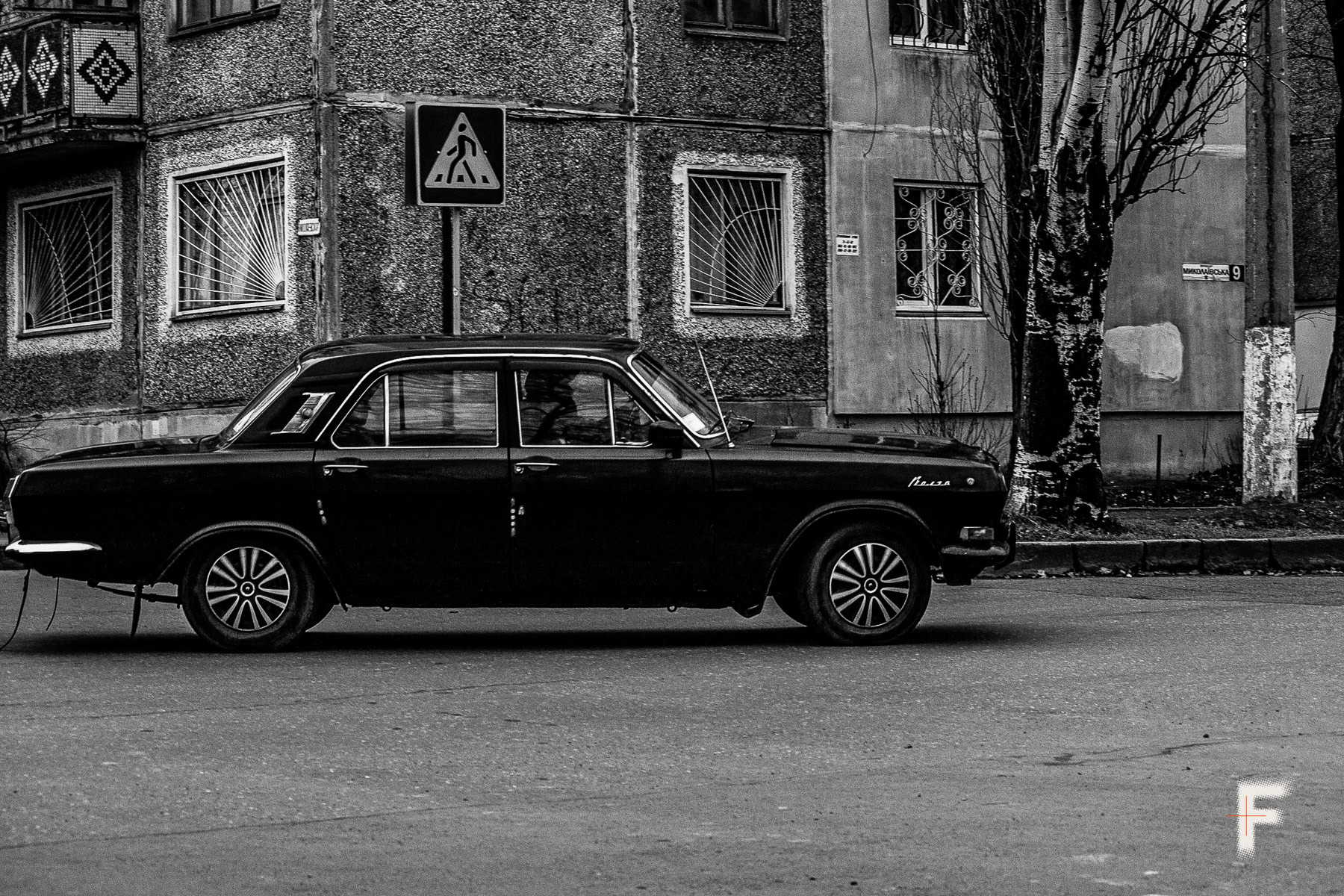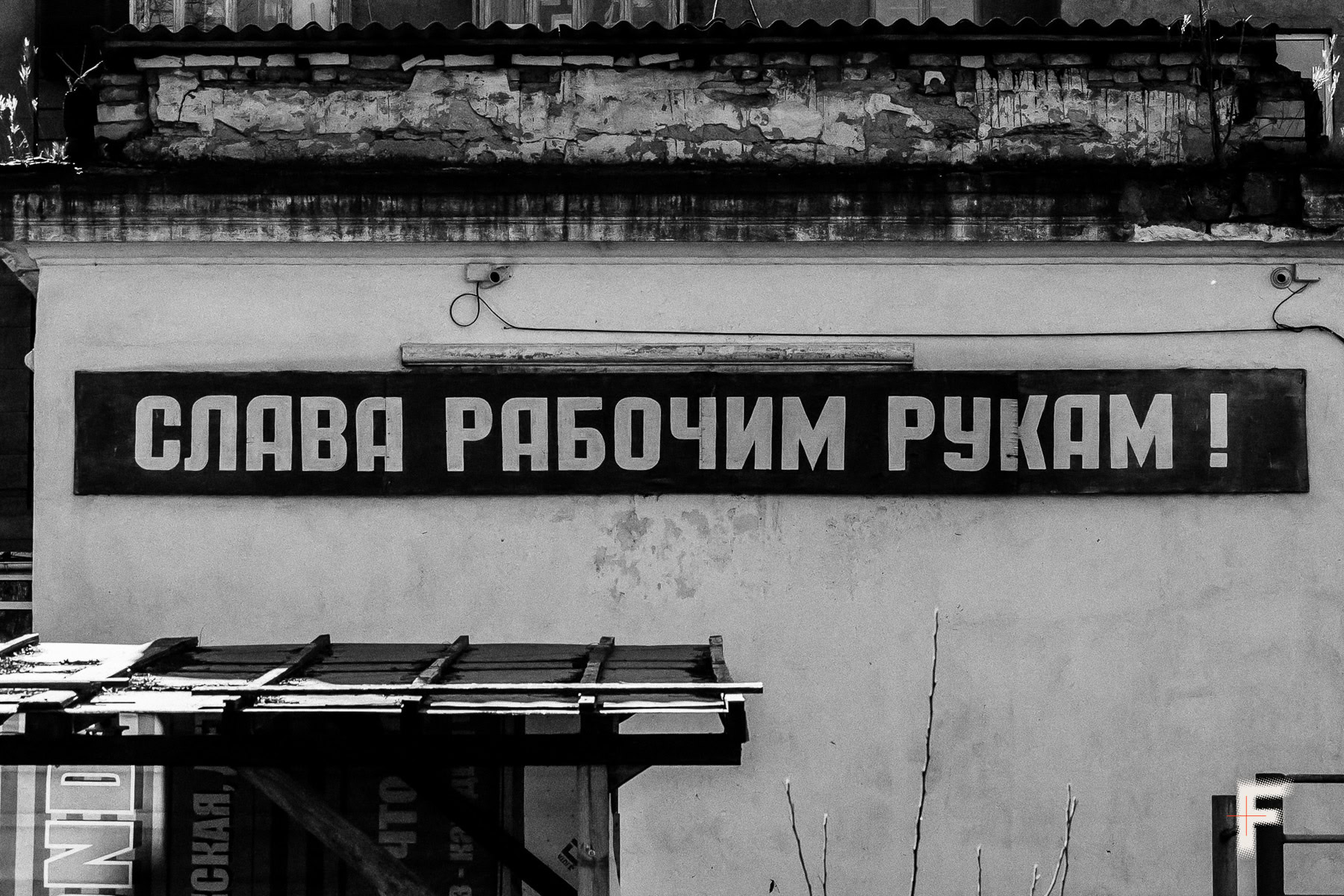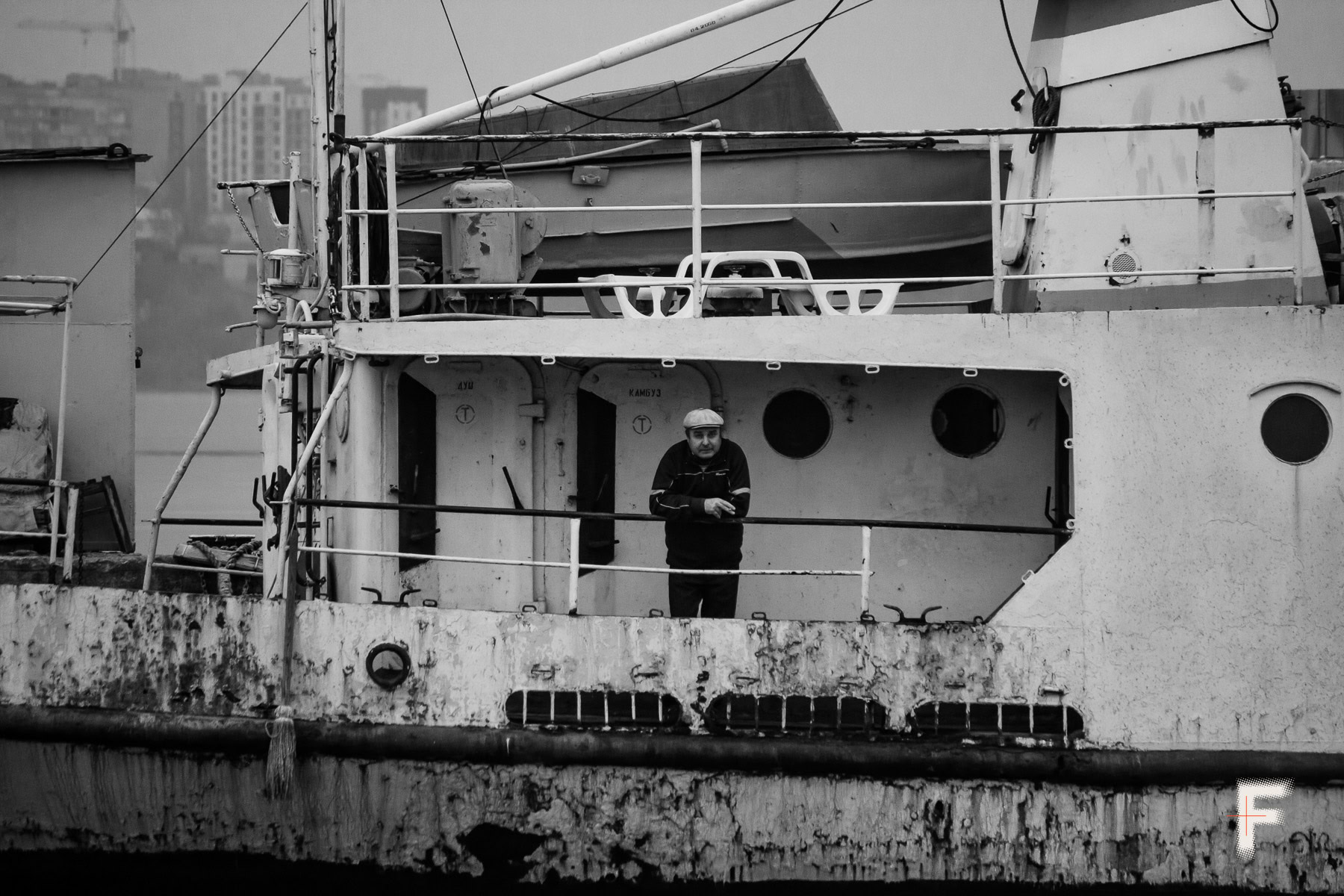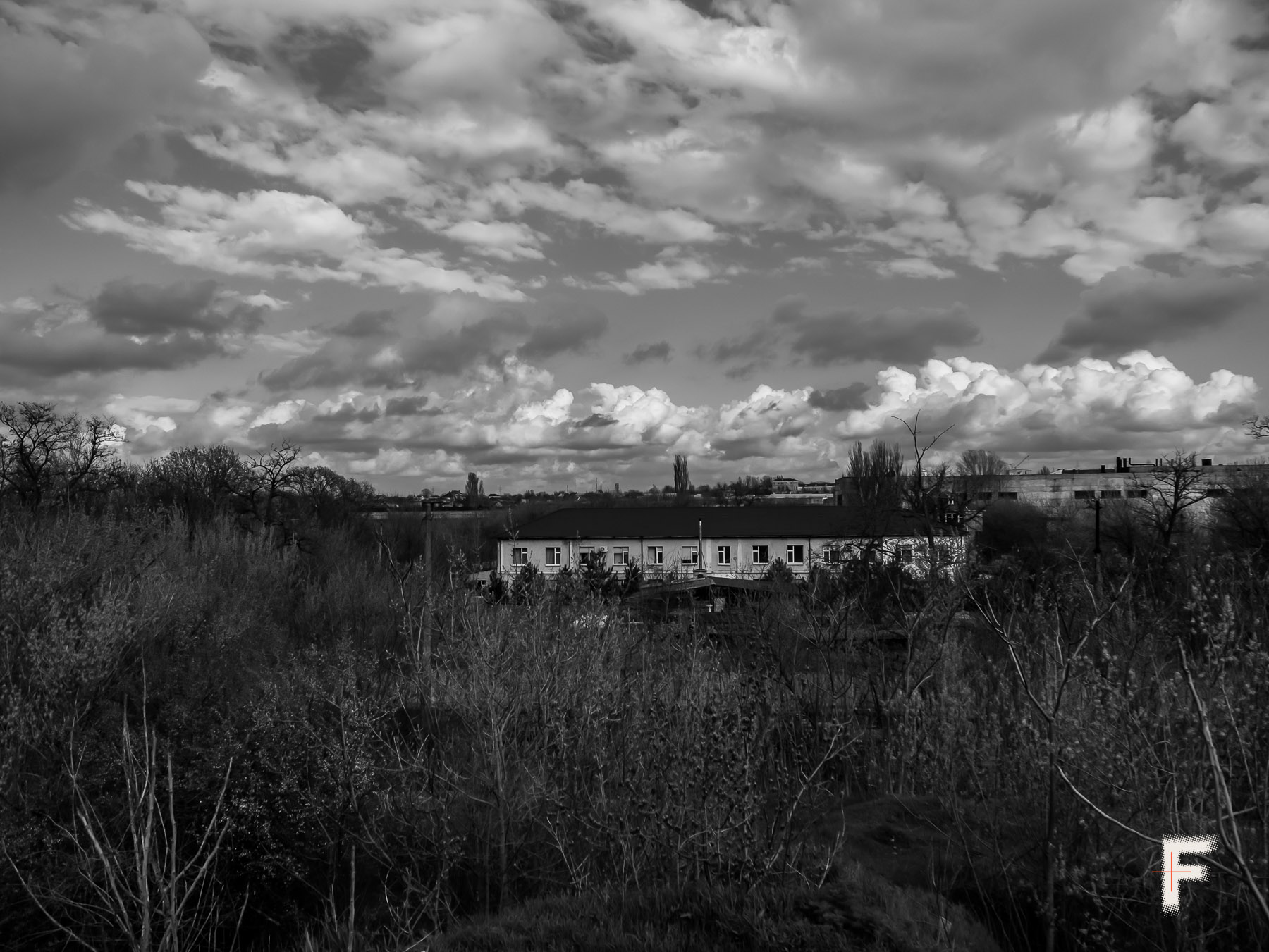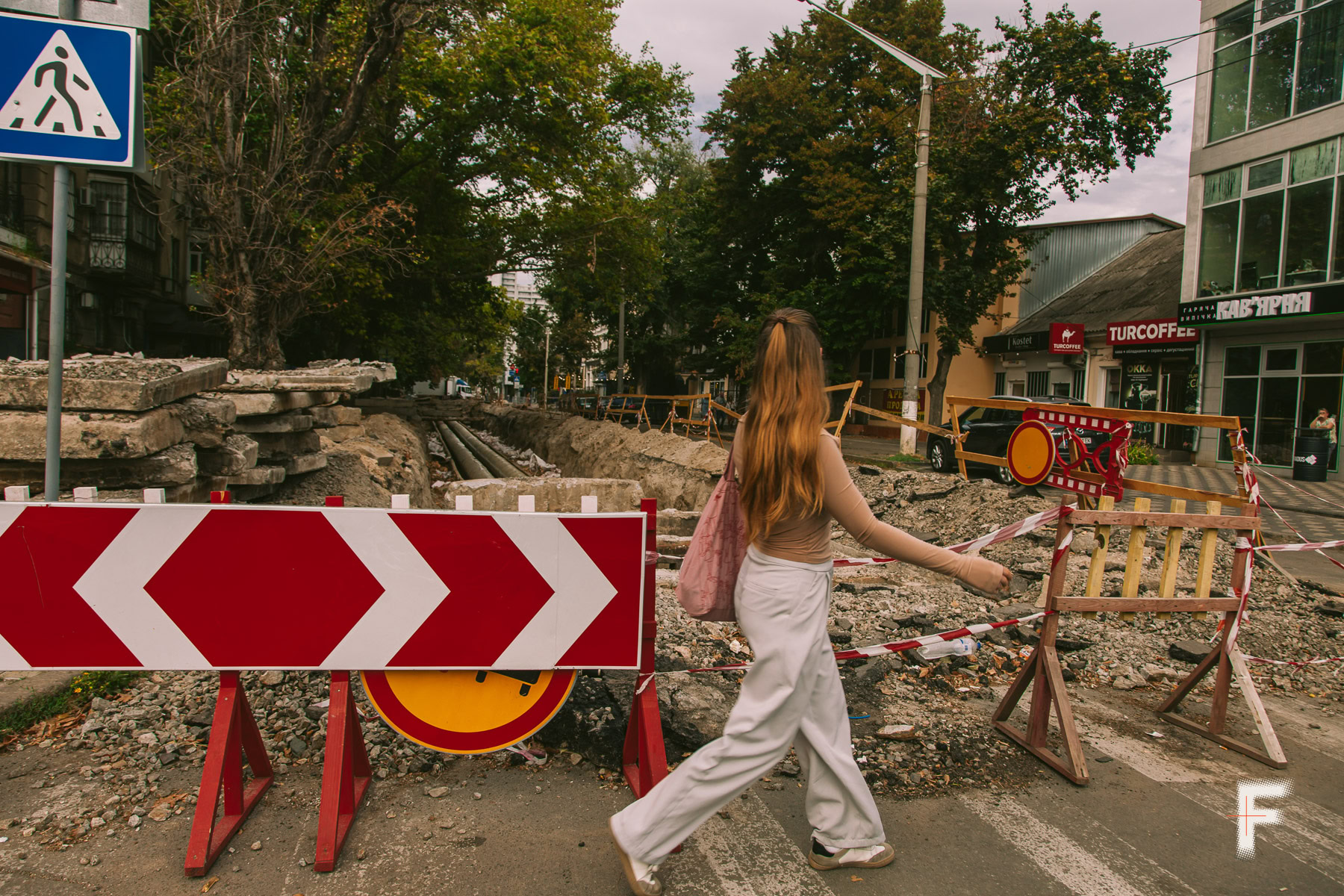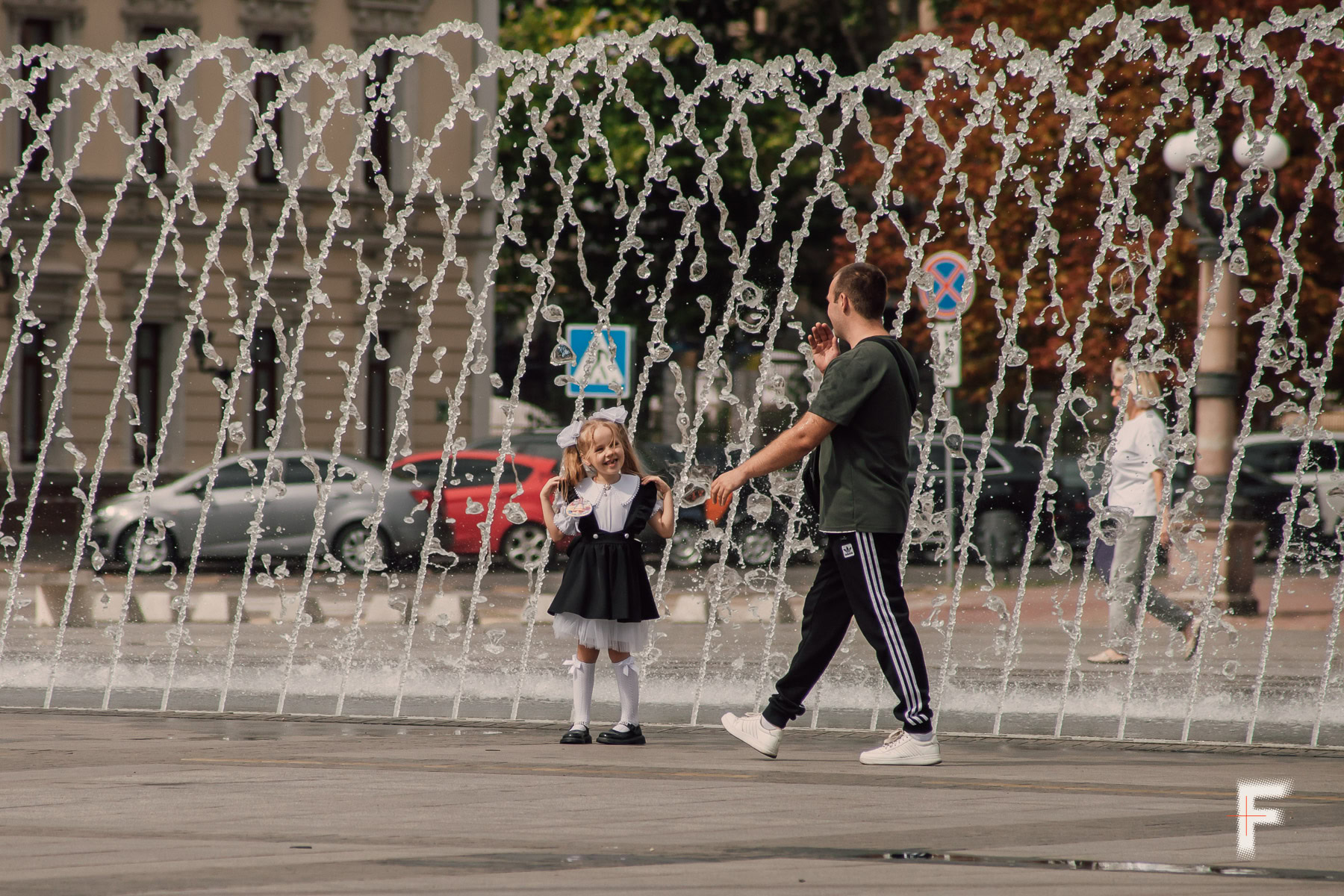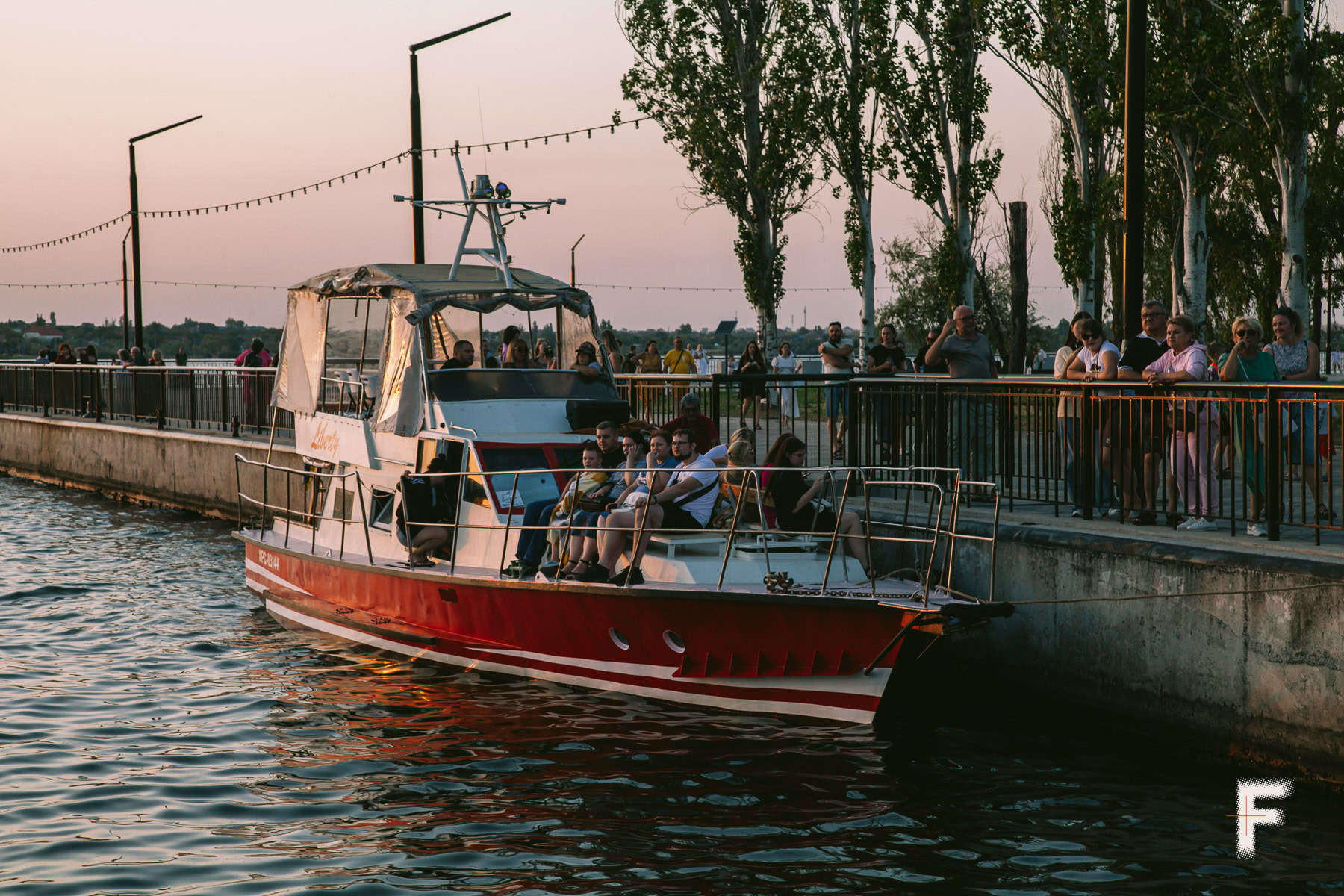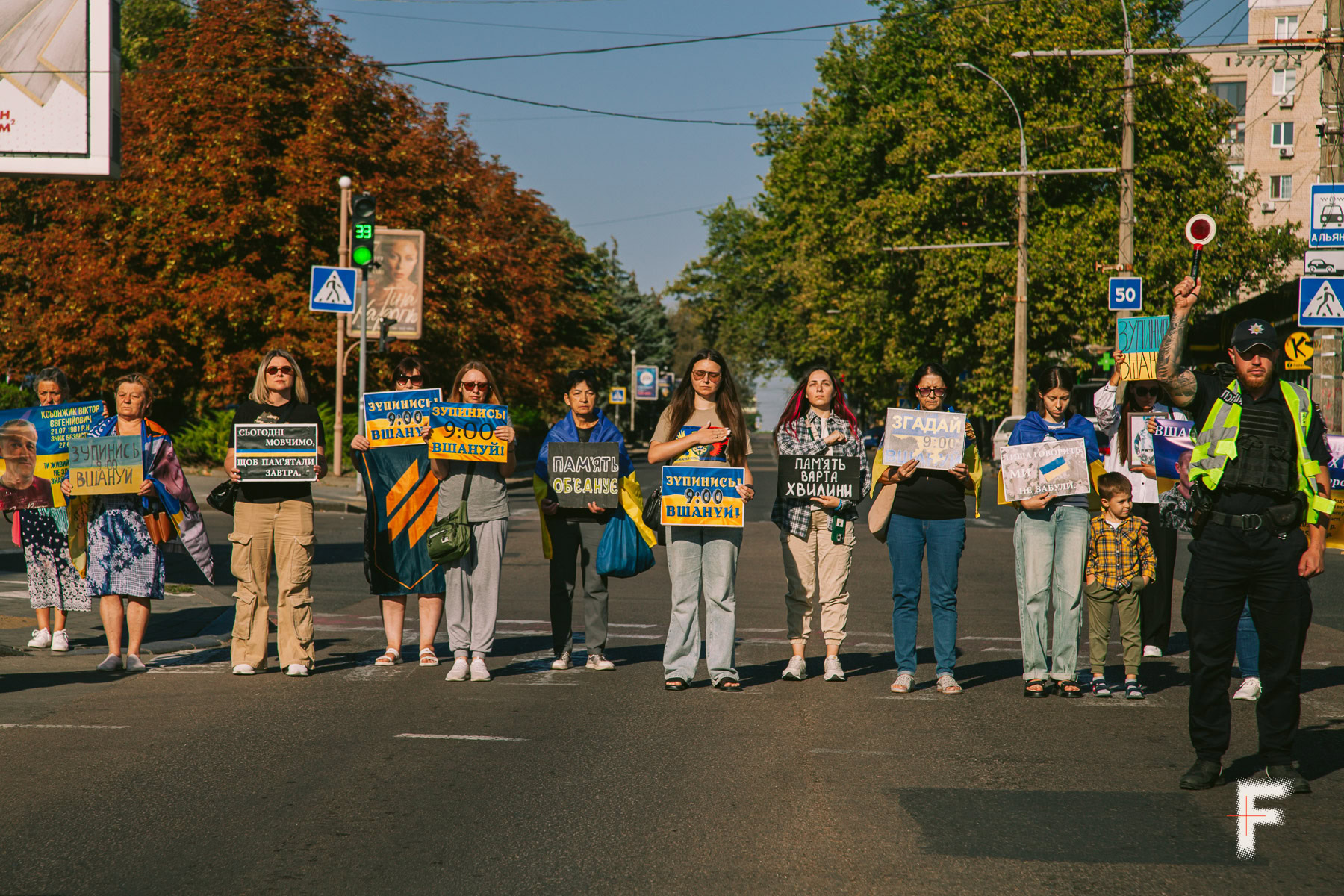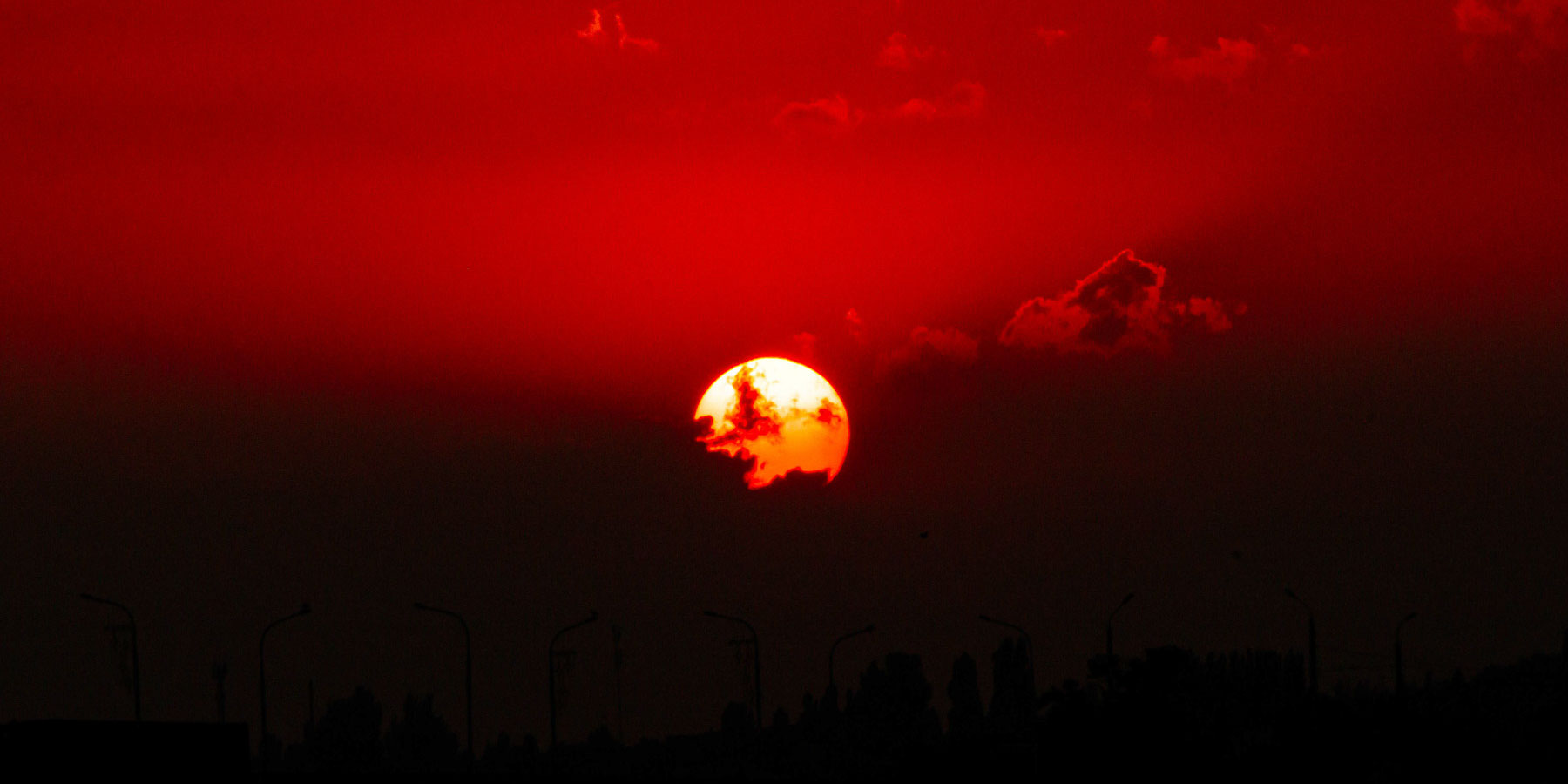

Mykolaiv. One cannot forget how the August sun sets over the Southern Bug.
Mykolaiv has transformed from a sweltering industrial city to a symbol of the resilience of the Ukrainian South. The full-scale war transformed both the city and its people, who became a true shield for their home, enduring the threat of occupation and daily shelling. Today, the city is coming back to life: displaced residents are returning, streets are being restored, jazz music fills the air, and a renewed sense of unity and solidarity is growing. Frontliner reporter Oleksandra Rakhimova tells the story of Mykolaiv’s endurance and rebirth.
Mykolaiv feels like a spacious studio apartment where I left all the best parts of myself. I placed them carefully on the shelves and in the corners, locked the door, and left, only to return one day. How could it be any different?
I moved to Mykolaiv when I turned 20, in 2015, from Lutsk, where I had been studying. I wanted to live in a bigger city with more opportunities, a faster rhythm, and people who would be on the same wavelength as me.
First impressions of the city
When I stepped off the train and looked at the station, I saw peeling paint, Soviet-style architecture, dust, and heat. I felt unsettled. Compared with quiet Lutsk, Mykolaiv seemed like an enormous, scorching frying pan of a city where people, and even their dogs, had weary eyes and tried to eke out a life among the burnt grass.
I couldn’t understand why such a large city didn’t have a decent shopping center, why there was so much trash and so many abandoned buildings. Everywhere I turned, there was a heaviness – starting with the hot air that made my chest ache, and ending with the bronze and concrete remnants of the Soviet era.
Another discovery for me was the behavior of the people. I had always believed that conflict was undesirable, that expressing emotions loudly was impolite, and that rudeness was a sign of poor upbringing or lack of education. Yet it turned out that, in some ways, I was mistaken.
People in Mykolaiv are very straightforward; they say exactly what they think, without embellishment. At times, this quality combined with their ardor might seem like aggression, but later it became clear that it is not. In Mykolaiv, it felt normal to argue with someone on public transport on the way to work. Yelling at a colleague, and ten minutes later drinking coffee and working together on tasks was perfectly acceptable as well. It turned out that all of this is part of the southern temperament: fiery and passionate but by no means malicious.
Mykolaiv during the pandemic: a new discovery
The rhythm of the city changed during the COVID-19 pandemic. Many people lost their employment – myself included. Entertainment venues switched to closed-door operations or shut down indefinitely. People started spending more time outdoors and the pace of the city became more measured. This was around the time when I picked up a camera.
The streets of the city became my training ground, and almost every day I would leave home with my camera in hand. I never planned my routes in advance, and this allowed me to explore the entire city. That’s how I began to see what I had missed before – the stark, raw beauty of Mykolaiv. The ships of the Kabotazhnyi Landing, the cranes of the Chornomorskyi Shipbuilding Yard capable of lifting 900-ton loads, the raising of the Inhulskyi Bridge, and the horizontal draw of the Varvarivskyi Bridge. I saw places where a Nazi concentration camp had been located during World War II, and I learned that Mykolaiv is a much older city than is commonly believed.
Trial by war and the unity of Mykolaiv people
And then the full-scale Russian invasion of Ukraine began. A few days earlier, military boats had been brought into the city’s waters. While my husband and I watched that undertaking, I asked:
Do you think
it will start soon?
He didn’t answer, because the tension had been hanging in the air for a long time, yet almost no one wanted to believe the inevitable.
The full-scale invasion changed everyone. Fear for life, fear of occupation, fear of complete blockade, constant shelling, food shortages, lack of water – this was what Russia brought. The streets emptied. People were afraid to leave their homes unless they absolutely had to.


A main road ran past my building, and heavy military vehicles were constantly moving along it toward the front line. Often, soldiers sat on top of the armor. I will never forget their eyes – what people call the “thousand-yard stare.”
I will also never forget the enemy helicopter that hovered right above me – so low that I could see the pilot’s face.
And I will never forget the queues after the Russians destroyed the water supply system. It was April, bitterly cold, and people stood for three to four hours just to fill a few containers with whatever water they could get.
Nor will I forget the morning after shelling, when the Russians struck a hotel just 400 meters from my home. I was drinking coffee in a café that, surprisingly, was still open. One of the city’s main streets ran beside it. That nearly empty street was bathed in the bright sunlight. I looked out and saw a white van with “200” written on its windshield. That was the moment I realized I could die.
[Translator’s note: A vehicle marked ‘200’ indicates it is transporting the bodies of fallen soldiers.]
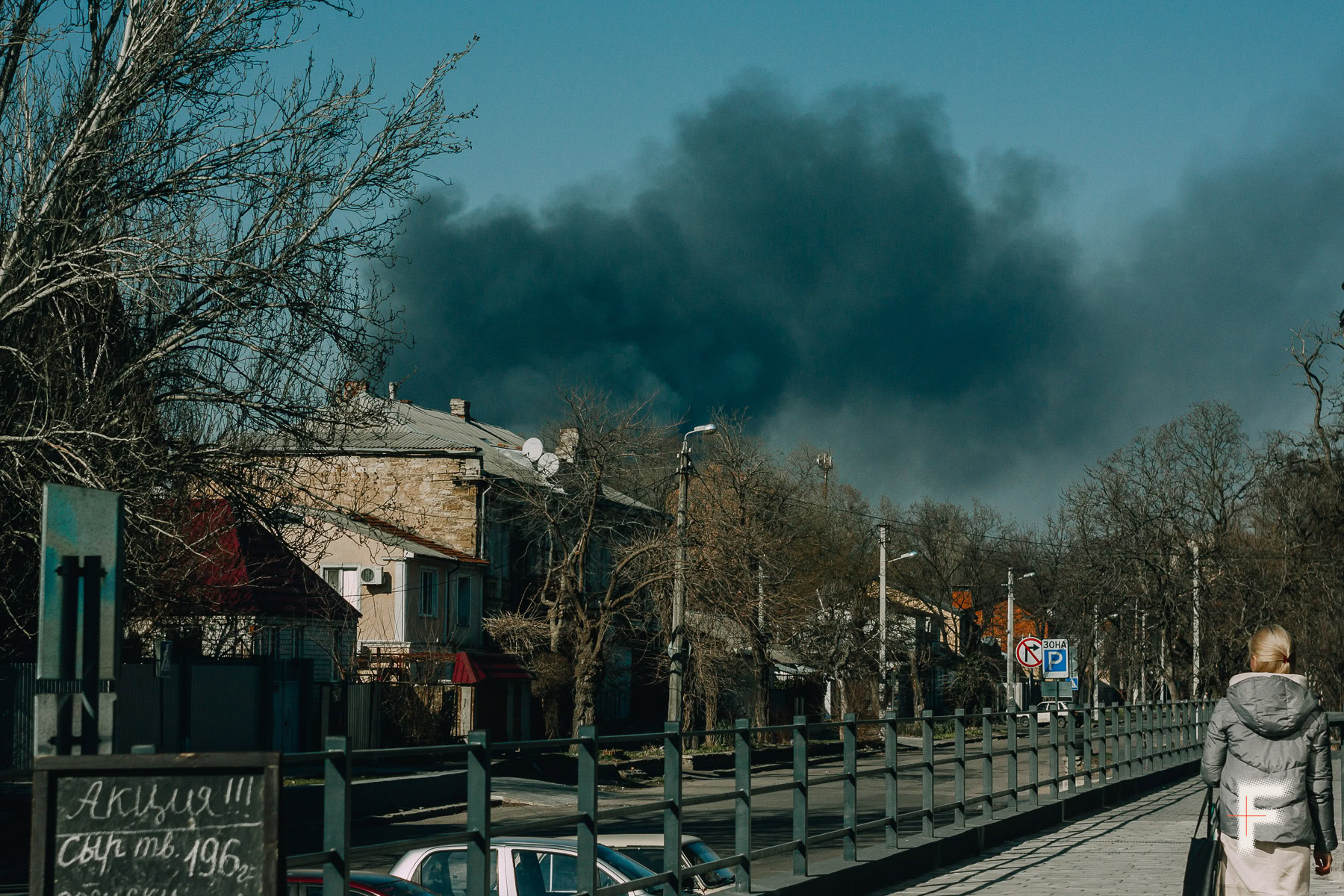

Still, the people who remained in the city became its shield. Some took up arms to defend Mykolaiv, while others became volunteers. Any request from the Military Administration was met with immediate action. Everyone came together as a single living organism with only one goal: save Mykolaiv from Russian occupation.
Returning home after the liberation of Kherson
The city began returning to life only after Kherson was liberated. Shelling decreased, and people, despite their fear, started coming back home. In addition to the residents of the city, many internally displaced persons from Mykolaiv and Kherson regions arrived. Locals welcomed anyone seeking help. They worked to provide everything, from drinking water and food to free housing. Even those who hadn’t returned to the city helped, sending money and volunteer aid and supporting local businesses. Of course, during the most difficult times, help came from across the country. Water was delivered in tankers from different regions, purification systems and humanitarian aid were sent, and essential supplies were provided to the military. Mykolaiv became the shield of the south, a city that endured.
At the end of April 2022, my husband and I moved to Kropyvnytskyi. It was a difficult decision for both of us.
By that time, we had already been unemployed for three months and our rainy day fund was depleting. There was little hope of finding new work. My mother and grandmother, who suffers from advanced Parkinson’s disease, remained in Mykolaiv.
Kropyvnytskyi was an ideal relocation option because it is close to Mykolaiv, and the relatively calm situation allowed us to work. We still live here today, but I have continued to travel to Mykolaiv regularly over the years.
When I arrived in the city in September 2025, I wanted to cry with happiness. Because home is not where someone kisses you on both cheeks. My home is like a worn rug that reminds you of how you grew up. And in the broadest sense, Mykolaiv is just that. I feel a warmth toward every house, no matter how neglected it may be. It is still there, in the same place that it was ten years ago. It is not destroyed by shelling.
The streets of Mykolaiv are full of life, even though much of the city is dug up as crews replace infrastructure damaged by salt water. Smiling children with ribbons in their hair and embroidered [traditional Ukrainian] shirts walk to school; on the “gray square”, as locals call the city central square, people rest near the fountains, and beaches are crowded with those who have come to watch the sunset, the red glow that brings peace to the soul.
Mykolaiv has never before felt this warm and open to new things, even in the years before the full-scale invasion. Every look carries a quiet sense of solidarity and strength.The people here are so eclectic, yet they live like a single organism: in the morning they attend rallies in support of prisoners of war, at noon they work, and in the evening they listen to jazz by the water. It seems that every problem can be solved, because this city is home to hardworking and free people who safeguard the Ukrainian South.
Mykolaiv has become home for many. I am among those who hold the keys to a house on the banks of the Southern Bug, where all the best of me is kept.
Author: Oleksandra Rakhimova
Adapted: Irena Zaburanna
Read more — Pokrovsk became the first city I witnessed being killed before my eyes
